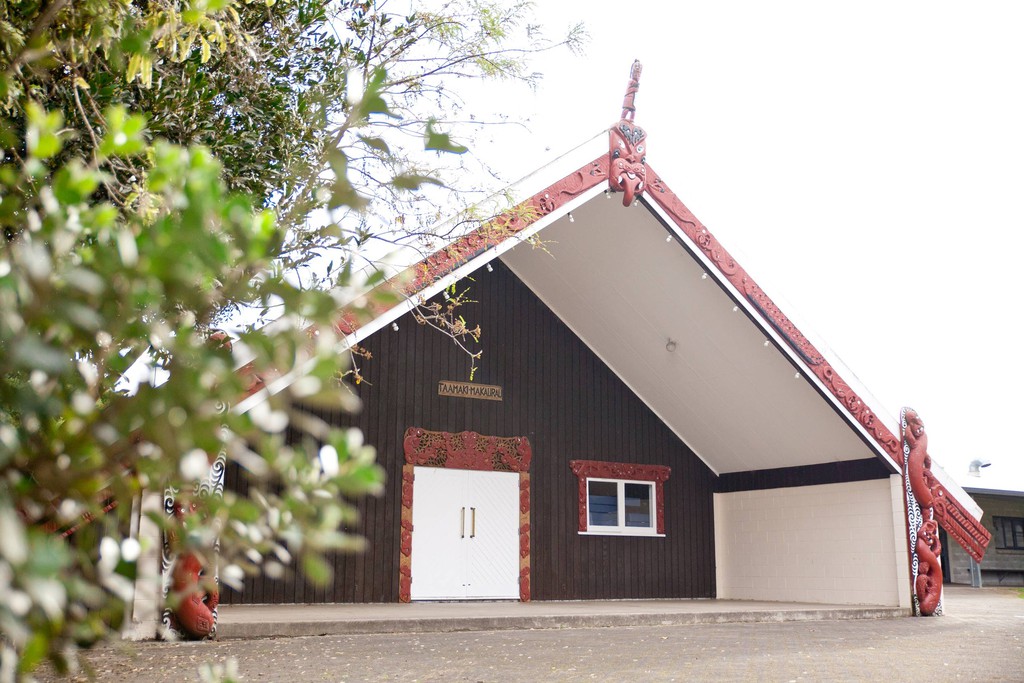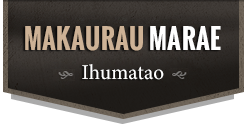Te Wai-O-Hua originates from Te Wakatuuwhenua and Te Moekaakara canoes, and from the early Hawaiki tribe Ngaa Ohomatakamokamo-o-Ohomairangi (Ngaa Oho), who once dominated much of the land between Tauranga and Cape Rodney, near Leigh. Ngaa Oho subsequently divided into three groups, based in three areas: Ngaa Oho at Papakura; Ngaa Riki from Papakura to Ootaahuhu-Ihumaatao and Ngaa Iwi from Ootaahuhu-Ihumaatao to the North Shore. Eventually they merged to become Te Wai-o-Hua (the waters of Hua) under the chief Te Hua-o-Kaiwaka.
Te Wai-o-Hua remained the main tribe on the Taamaki isthmus well into the 18th century. Around 1741 their paramount chief, Kiwi Taamaki, was killed in a battle at Paruroa (Great Muddy Creek) by Te Waha-Akiaki of Te Taouu and Ngaati Whaatua.

Mataoho
Volcanic cones dominate the geography of Taamaki, and oral traditions remember them in different ways. According to one tradition, the deity Mataoho lived in Te Ipu-a-Mataoho (the bowl of Mataoho – Mt Eden’s crater). When his wife left him, taking all his clothes, Mataoho called on the goddess Mahuika. The fire she sent to warm him formed Ngaa Huinga-a-Mataoho (the gathered volcanoes of Mataoho).
The original name for Ihumaatao is Te-Ihu-o-Mataoho – The nose of Mataoho
Makaurau Marae is situated in the heart of Ihumaatao Pa. Surrounded by our tupuna awa, Ooruarangi, and the historic Otuataua Stonefields, it is a marae rich in culture and history.
Nga Tapuwae o Mataoho-The sacred footprints of Mataoho-Puukaki
Te Pane o Mataoho- The Decaputated head of Mataoho- Mangere Mountain
Te Upoko o Mataoho- The Head of Mataoho-Mangere Mountain
Te Ipu o Mataoho-The bowl of Mataoho-Mt Eden.
The Story of Hape
Hape was a Tohunga (a priest), whose story has been told for eighteen generations. This history was told to us from one of our kaumatua, the late Maurice Wilson, and was told to him by his father, Jack Haki Manutapuwaenui Wilson:
“During their preparations for their Great Migration across Te Moana Nui a Kiwa , to the land of Aotearoa, a meeting was held between the tuakana (eldest males) of each family. The meeting was to discuss the voyage in general, and those who would go.
Because he was the eldest of the male line of his hapuu (sub-tribe), Hape was chosen as a representative, but because he had been born with deformed feet, the choice was not popular. (‘Hape’ means ‘deformed feet’, and in his case, both feet turned inward.)
During the meeting of the tuakana, it was decided that only the young, of sound mind and body, would make the long voyage to this land we now call New Zealand. Realising that he was one of those who would be left behind, Hape wept and prayed to have his body restored to normality, but alas this was not to be.
On the day of departure, Hape pleaded with his hapu to hide him in one of the canoes, but no one took any notice of him. So the many canoes sailed away leaving Hape.
Still pleading, Hape fell to his knees weeping, uttering incantations and praying to his Tupuna, Tangaroa – God of all the Seas – to help him. Three days and three nights went without eating or sleeping. Hape continued his prayers and incantations.
On the fourth morning, Hape, looking up, thought he saw a huge tidal wave coming towards him, but as it got closer he realised that it was a huge taniwha (sea god) in the shape of a stingray, arising out of the sea, coming to the kneeling Hape.
Knowing this to be the work of Tangaroa, God of all Seas, Hape climbed on the back of the great fish which then headed off in the direction taken by the canoes. He said the Taniwha, Kawea kawea ki te whenua a Kupe. After many days and many nights of traveling, they arrived at their destination, the Manukau Harbour. Using his great mana (spiritual powers), Hape urged his taniwha companion to the spot where he knew that the canoes would land. (This place is now known as Elletts Point, Māngere). Turning to his companion, Hape farewelled the taniwha in true Maaori fashion.
When Hape had farewelled the taniwha, the huge stingray dived into the depths of the Manukau Harbour and is now known as Kaiwhare, keeper of the Manukau. (There have been sightings of Kaiwhare as recently as 1918 and again at Elletts Point, in Ihumaatao in 1945).
As Hape stood on the rocks he looked behind him on the shore, and there behind some native trees stood a hill with an unusually flat top. Hape used this hill as a viewing point. When he reached the top of the hill, he found that he could see most of the Manukau Harbour.
The hill where Hape discovered that he could see most the Manukau Harbour when he rested face down, was called Te Puke Tapapa Tanga oo Hape (Hape’s Resting Place) now called Puke Tapapa, but commonly known as Ihumatao.
Many days later, to Hape amazement, he saw sailing, not from the entrance to the Manukau Harbour, but from the opposite direction, the waka (canoes) of his haapu. And true to his prediction, they sailed straight to the point where he had made his mark in the Papa Rock. On seeing the mark of Hape feet on the Papa Rock, the tohunga on the lead canoe raised his eyes, and seeing Hape on the hill, called out, asking his forgiveness.
Hape replied with karanga - hence Karangahape rd.
After acknowledging Hape mana (power), wisdom and territory, they turned their canoes westward and sailed out of the Manukau Heads.
For many nights after, the chants and incantations of Hape to Tangaroa could be heard and even now if you are standing of Puke Tapapa at night, you will hear the waves of the Manukau chanting his incantation to Tangaroa. ”
A small group remained with Hape in Māngere, and their descendants are the Waiohua, some of whom still live at Ihumaatao, a village opposite Puketutu Island.
